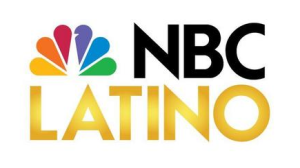Number of U.S. Latino Serving colleges and universities sees big jump

 By Nina Terrero, NBCLatino
By Nina Terrero, NBCLatino
According to data released by Hispanic Association of Colleges and Universities (HACU) and theExcelencia in Education organizations, HSIs represent 11% of all higher-education institutions nationwide, but account for more than half of all Latino undergraduate enrollment. Approximately 54% of Latino undergraduates enrolled in HSIs in 2011-12, making these institutions a crucial matter for “national attention,” says Deborah Santiago, Vice President of Policy and co-founder of Excelencia in Education.
“Census data says Latino enrollment in college is the highest it’s ever been, but now it’s time to focus on the institutions they are attending, understand their reasons for attendance and focus on the quality of education they are receiving,” explains Santiago, citing the fact that in 2011-12, there was a 14.5 percent increase in colleges and universities meeting the federal definition of Hispanic-Serving institutions.
Hispanic-Serving higher education institutions are defined by federal law as colleges and universities with 25 percent or more total Hispanic full-time student enrollment. Recognized by federal law in 1994, HSIs are identified strictly by Latino enrollment, not by cultural affiliation, as is characteristic of Historically Black Colleges and Universities (HBCUs)
“HBCUs were created in the 1800s to serve African American students during segregation,” notes Santiago, whose organization is based in Washington, D.C. “HSIs are defined by their numbers of Hispanic enrollment – not by the manner in which they serve the Latino community.”
HSIs – concentrated predominantly in California, New Mexico, Texas and Puerto Rico and located across 17 states nationwide, are eligible for Title V education funding from the U.S. Education Department. Title V funds allow institutions to expand academic offerings and programs to expand college attainment and completion.
Excelencia in Education and HACU, which lobbies for Hispanic-Serving institutions, compiled their list using data from the U.S. Education Department, although the Education Department maintains its own list of HSIs.
“It’s important to recognize HSIs because there is no federal formal program designating them as such,” says Santiago, who has helped create annual lists of HSIs since 1995. “HSIs can apply for federal funding, but they may not even know they are eligible until they themselves see these lists.”
This article was first published in NBCLatino.
Nina Terrero, Web Producer: Passionate about social issues, health, education, discovering untold stories among U.S. Latinos and exploring Latino culture through food, literature, theatre and the arts, she holds a B.A. in Government from Cornell University. She is also a graduate of Columbia University’s Graduate School of Arts & Science, where she received an M.A. in Political Science. Of Puerto Rican and Dominican heritage, Nina worked at ABC News as a digital reporter before joining the team at NBC Latino. Feel free to ask her about the latest films, urban political policy or her most recent forays in cooking and eating around New York City.
[Photo by HACUNews]

